Segmenting Messy Text: Detecting Boundaries in Text Derived from Historical Newspaper Images

Auto-TLDR; Text Segmentation of Marriage Announcements Using Deep Learning-based Models
Similar papers
CKG: Dynamic Representation Based on Context and Knowledge Graph
Xunzhu Tang, Tiezhu Sun, Rujie Zhu

Auto-TLDR; CKG: Dynamic Representation Based on Knowledge Graph for Language Sentences
Abstract Slides Poster Similar
KoreALBERT: Pretraining a Lite BERT Model for Korean Language Understanding
Hyunjae Lee, Jaewoong Yun, Bongkyu Hwang, Seongho Joe, Seungjai Min, Youngjune Gwon
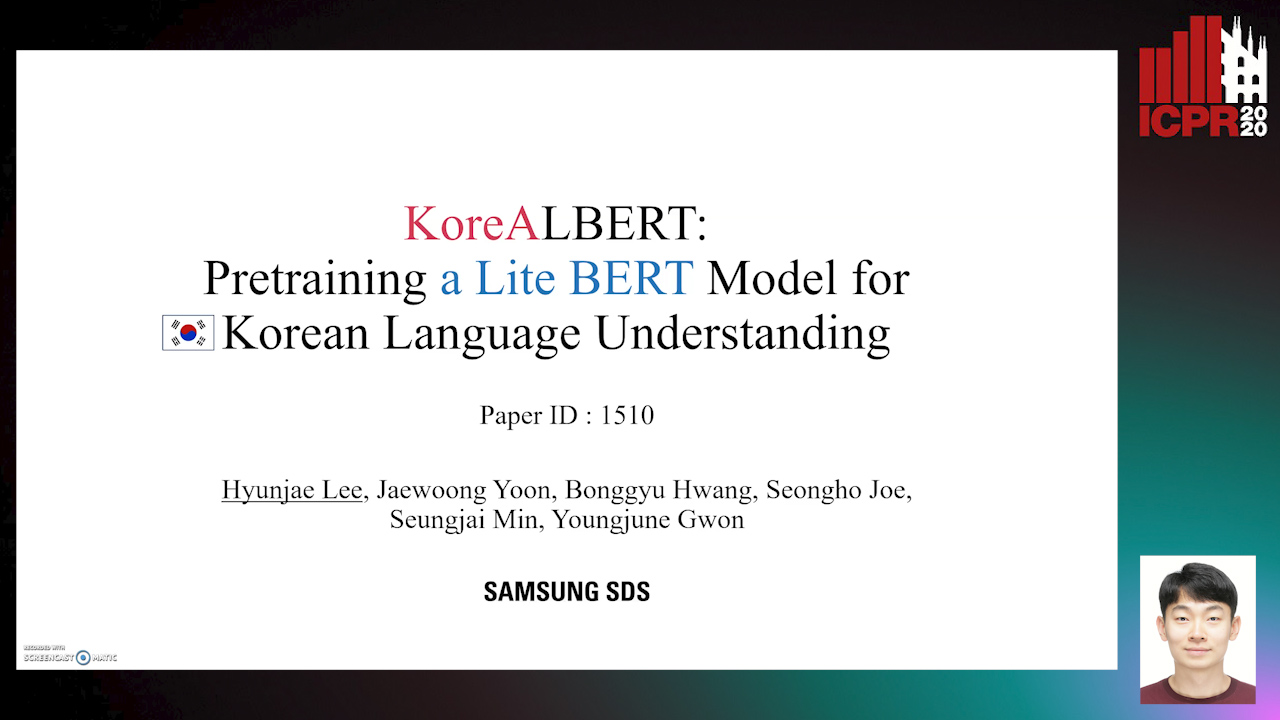
Auto-TLDR; KoreALBERT: A monolingual ALBERT model for Korean language understanding
Abstract Slides Poster Similar
PIN: A Novel Parallel Interactive Network for Spoken Language Understanding
Peilin Zhou, Zhiqi Huang, Fenglin Liu, Yuexian Zou

Auto-TLDR; Parallel Interactive Network for Spoken Language Understanding
Abstract Slides Poster Similar
Tackling Contradiction Detection in German Using Machine Translation and End-To-End Recurrent Neural Networks
Maren Pielka, Rafet Sifa, Lars Patrick Hillebrand, David Biesner, Rajkumar Ramamurthy, Anna Ladi, Christian Bauckhage
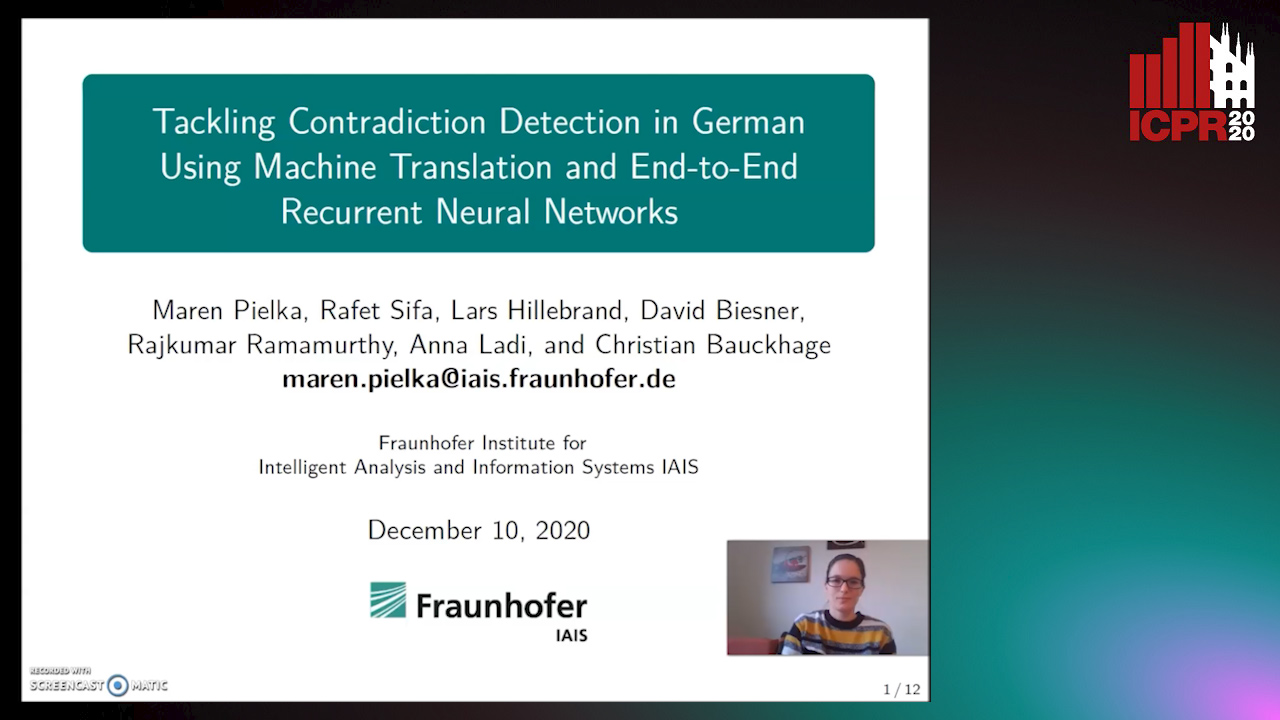
Auto-TLDR; Contradiction Detection in Natural Language Inference using Recurrent Neural Networks
Abstract Slides Poster Similar
PICK: Processing Key Information Extraction from Documents Using Improved Graph Learning-Convolutional Networks
Wenwen Yu, Ning Lu, Xianbiao Qi, Ping Gong, Rong Xiao

Auto-TLDR; PICK: A Graph Learning Framework for Key Information Extraction from Documents
Abstract Slides Poster Similar
Evaluation of BERT and ALBERT Sentence Embedding Performance on Downstream NLP Tasks
Hyunjin Choi, Judong Kim, Seongho Joe, Youngjune Gwon

Auto-TLDR; Sentence Embedding Models for BERT and ALBERT: A Comparison and Evaluation
Abstract Slides Poster Similar
Learning Neural Textual Representations for Citation Recommendation
Thanh Binh Kieu, Inigo Jauregi Unanue, Son Bao Pham, Xuan-Hieu Phan, M. Piccardi
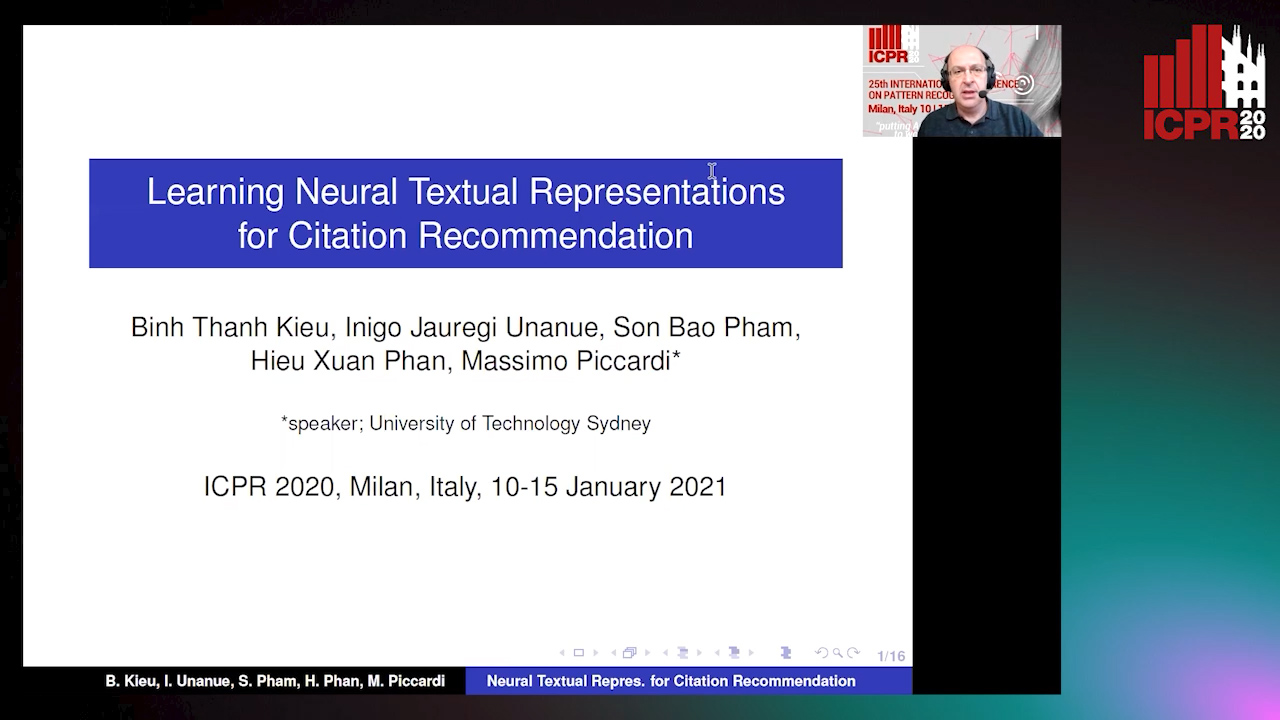
Auto-TLDR; Sentence-BERT cascaded with Siamese and triplet networks for citation recommendation
Abstract Slides Poster Similar
Enriching Video Captions with Contextual Text
Philipp Rimle, Pelin Dogan, Markus Gross
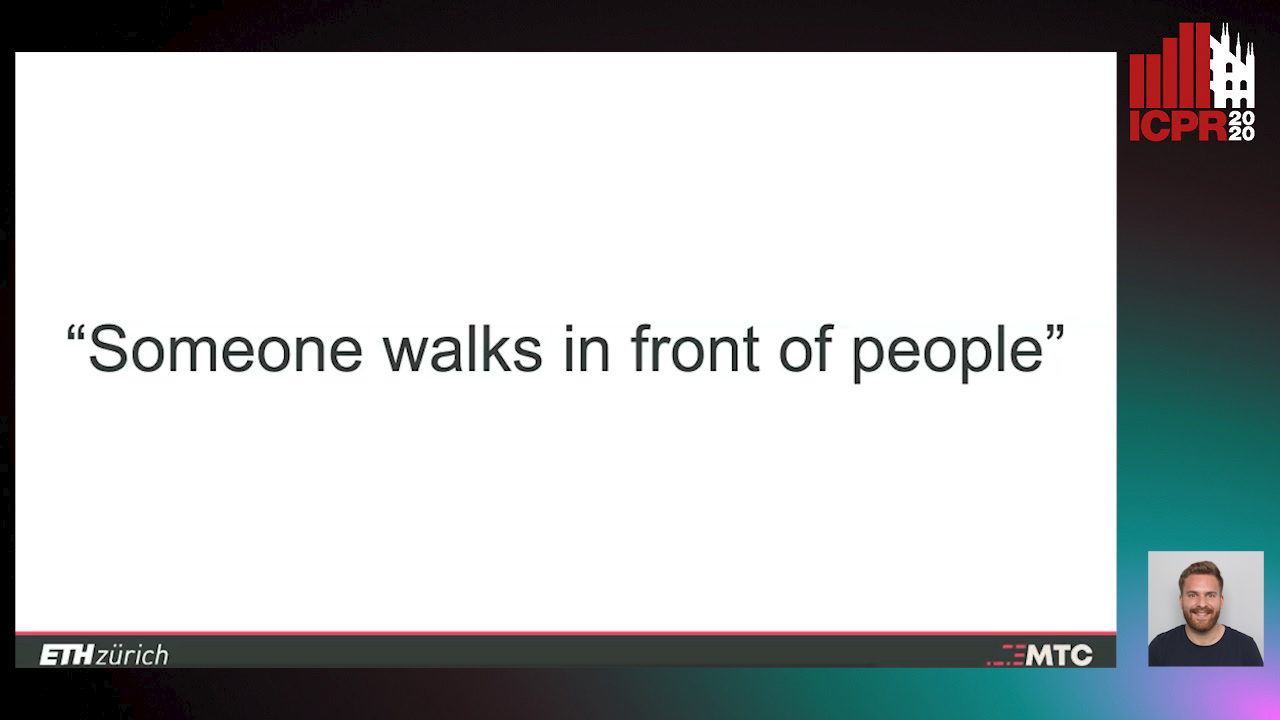
Auto-TLDR; Contextualized Video Captioning Using Contextual Text
Abstract Slides Poster Similar
End-To-End Hierarchical Relation Extraction for Generic Form Understanding
Tuan Anh Nguyen Dang, Duc-Thanh Hoang, Quang Bach Tran, Chih-Wei Pan, Thanh-Dat Nguyen
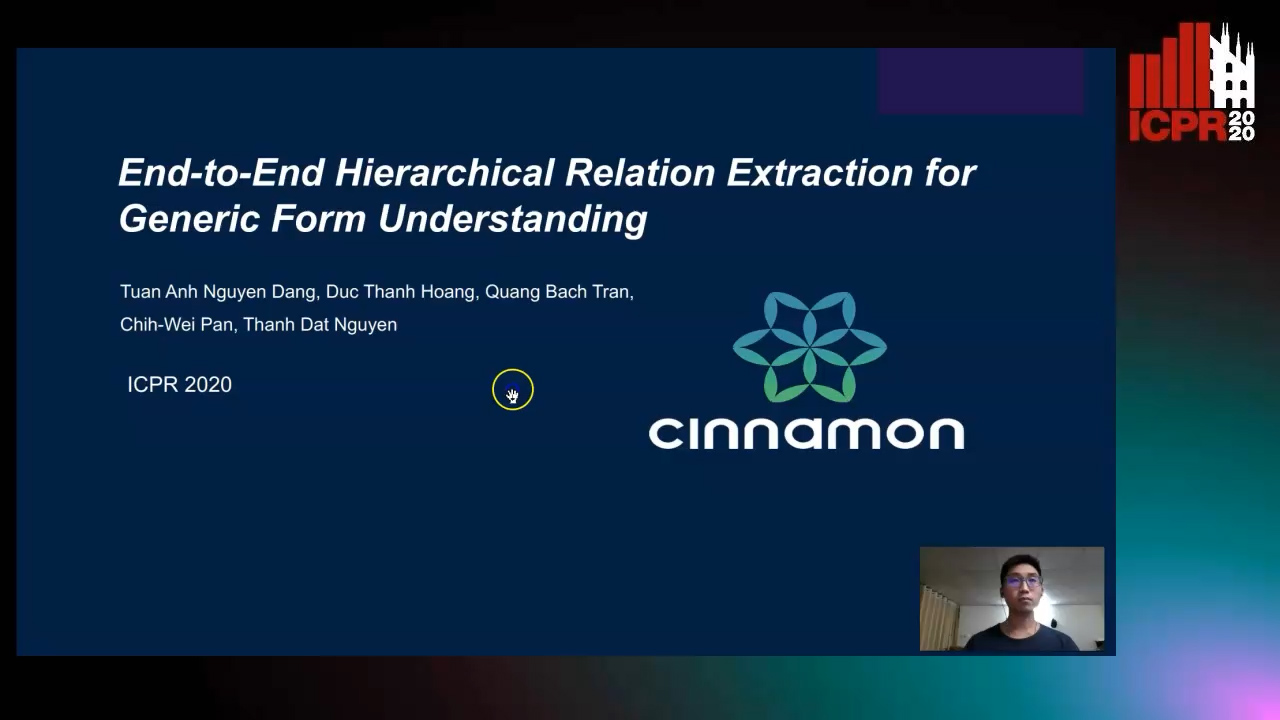
Auto-TLDR; Joint Entity Labeling and Link Prediction for Form Understanding in Noisy Scanned Documents
Abstract Slides Poster Similar
GCNs-Based Context-Aware Short Text Similarity Model

Auto-TLDR; Context-Aware Graph Convolutional Network for Text Similarity
Abstract Slides Poster Similar
Named Entity Recognition and Relation Extraction with Graph Neural Networks in Semi Structured Documents
Manuel Carbonell, Pau Riba, Mauricio Villegas, Alicia Fornés, Josep Llados

Auto-TLDR; Graph Neural Network for Entity Recognition and Relation Extraction in Semi-Structured Documents
Cross-Supervised Joint-Event-Extraction with Heterogeneous Information Networks
Yue Wang, Zhuo Xu, Yao Wan, Lu Bai, Lixin Cui, Qian Zhao, Edwin Hancock, Philip Yu

Auto-TLDR; Joint-Event-extraction from Unstructured corpora using Structural Information Network
Abstract Slides Poster Similar
Adversarial Training for Aspect-Based Sentiment Analysis with BERT
Akbar Karimi, Andrea Prati, Leonardo Rossi
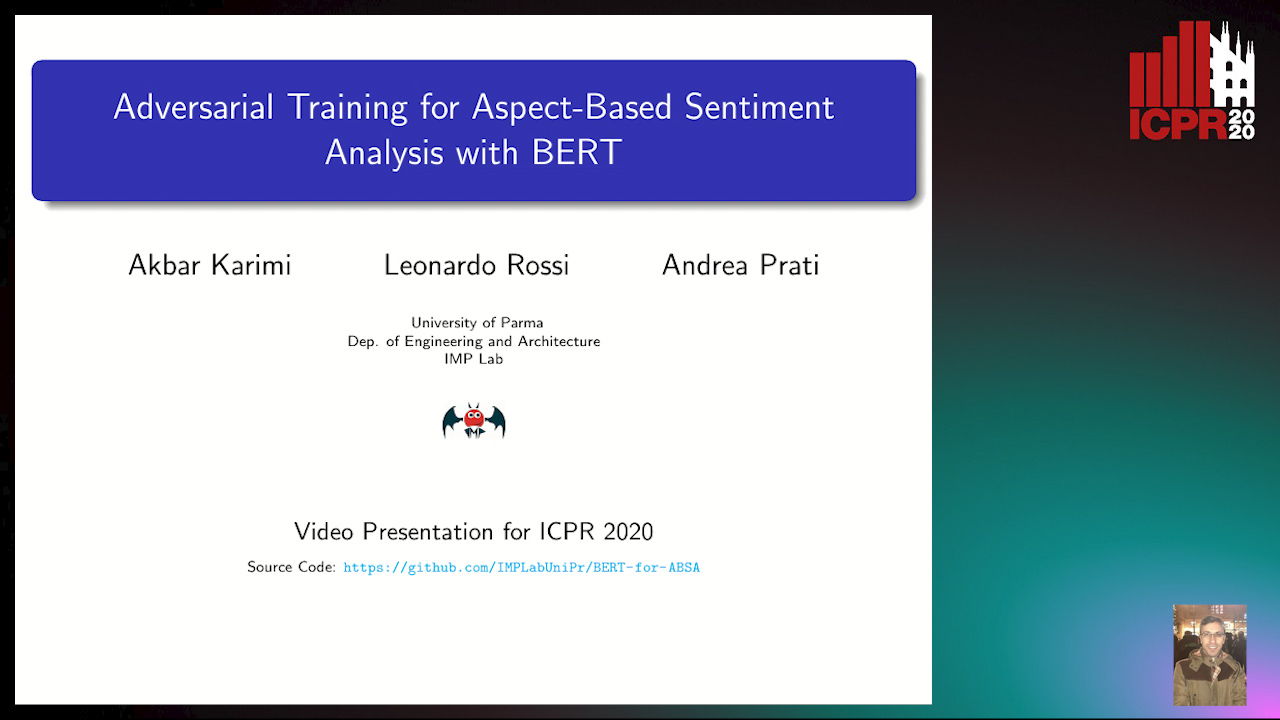
Auto-TLDR; Adversarial Training of BERT for Aspect-Based Sentiment Analysis
Abstract Slides Poster Similar
Video Episode Boundary Detection with Joint Episode-Topic Model
Shunyao Wang, Ye Tian, Ruidong Wang, Yang Du, Han Yan, Ruilin Yang, Jian Ma
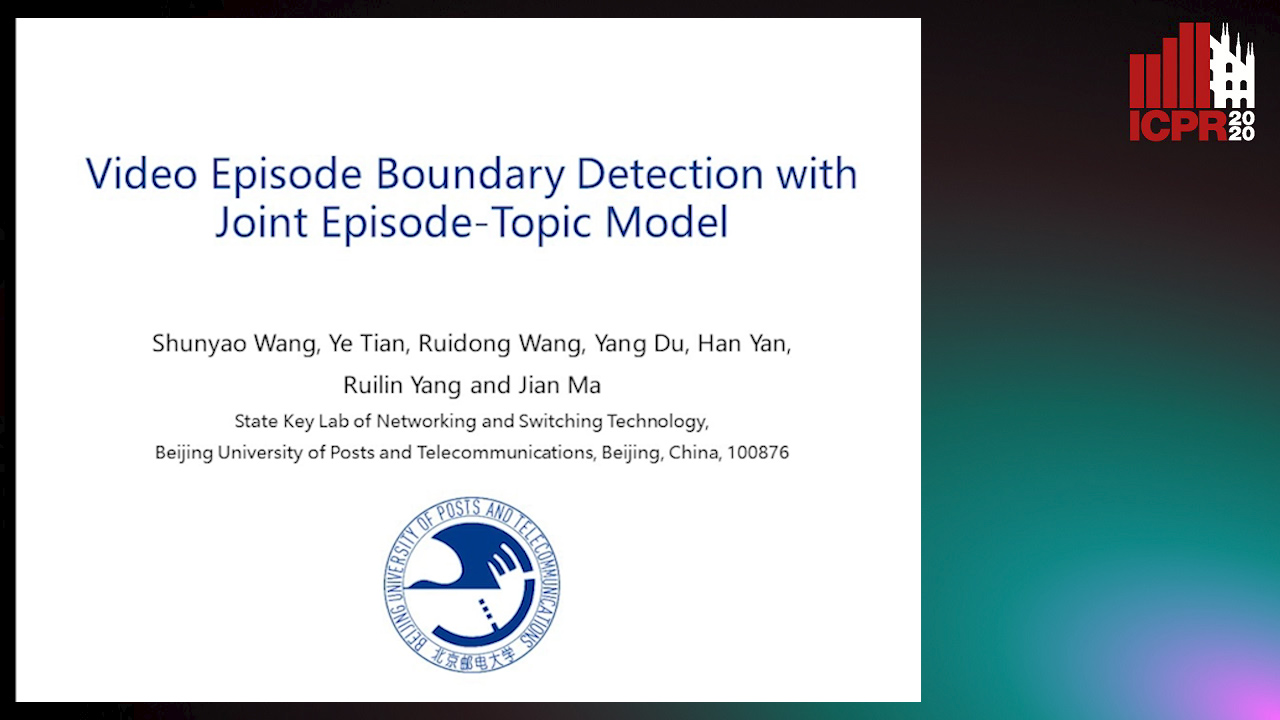
Auto-TLDR; Unsupervised Video Episode Boundary Detection for Bullet Screen Comment Video
Abstract Slides Poster Similar
The HisClima Database: Historical Weather Logs for Automatic Transcription and Information Extraction
Verónica Romero, Joan Andreu Sánchez
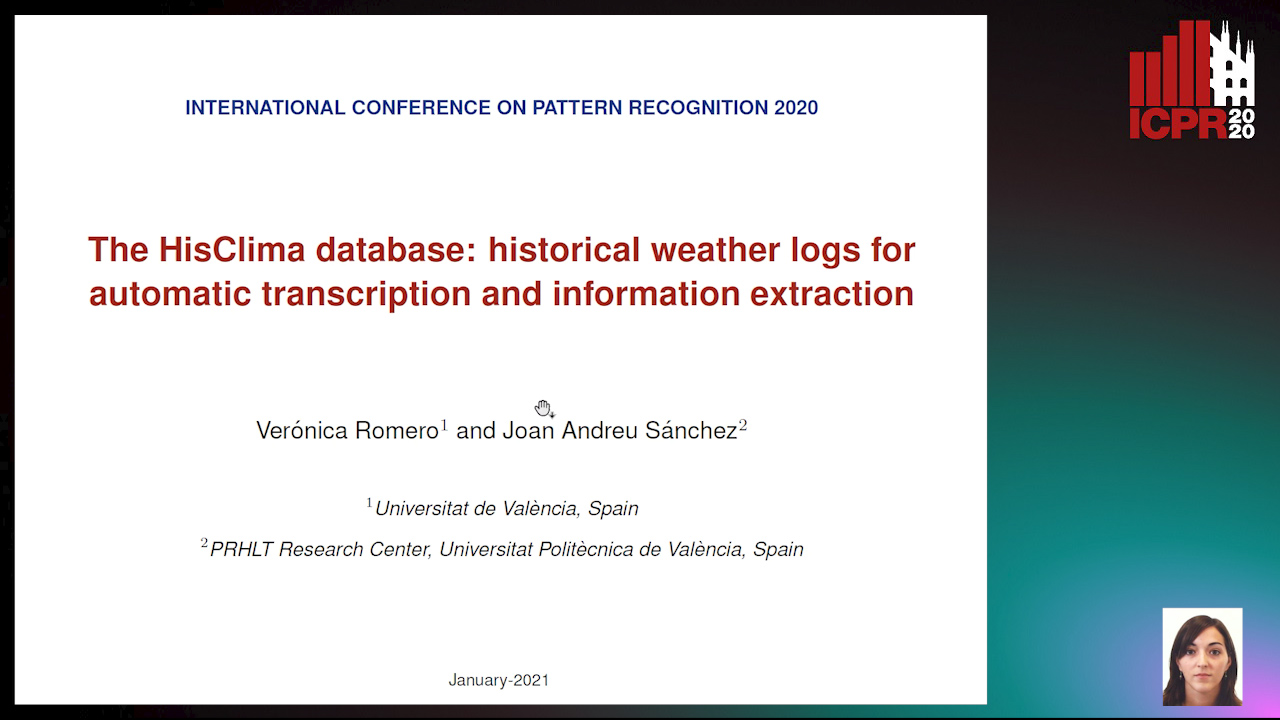
Auto-TLDR; Automatic Handwritten Text Recognition and Information Extraction from Historical Weather Logs
Abstract Slides Poster Similar
Zero-Shot Text Classification with Semantically Extended Graph Convolutional Network
Tengfei Liu, Yongli Hu, Junbin Gao, Yanfeng Sun, Baocai Yin

Auto-TLDR; Semantically Extended Graph Convolutional Network for Zero-shot Text Classification
Abstract Slides Poster Similar
Efficient Sentence Embedding Via Semantic Subspace Analysis
Bin Wang, Fenxiao Chen, Yun Cheng Wang, C.-C. Jay Kuo

Auto-TLDR; S3E: Semantic Subspace Sentence Embedding
Abstract Slides Poster Similar
Text Synopsis Generation for Egocentric Videos
Aidean Sharghi, Niels Lobo, Mubarak Shah

Auto-TLDR; Egocentric Video Summarization Using Multi-task Learning for End-to-End Learning
Moto: Enhancing Embedding with Multiple Joint Factors for Chinese Text Classification
Xunzhu Tang, Rujie Zhu, Tiezhu Sun
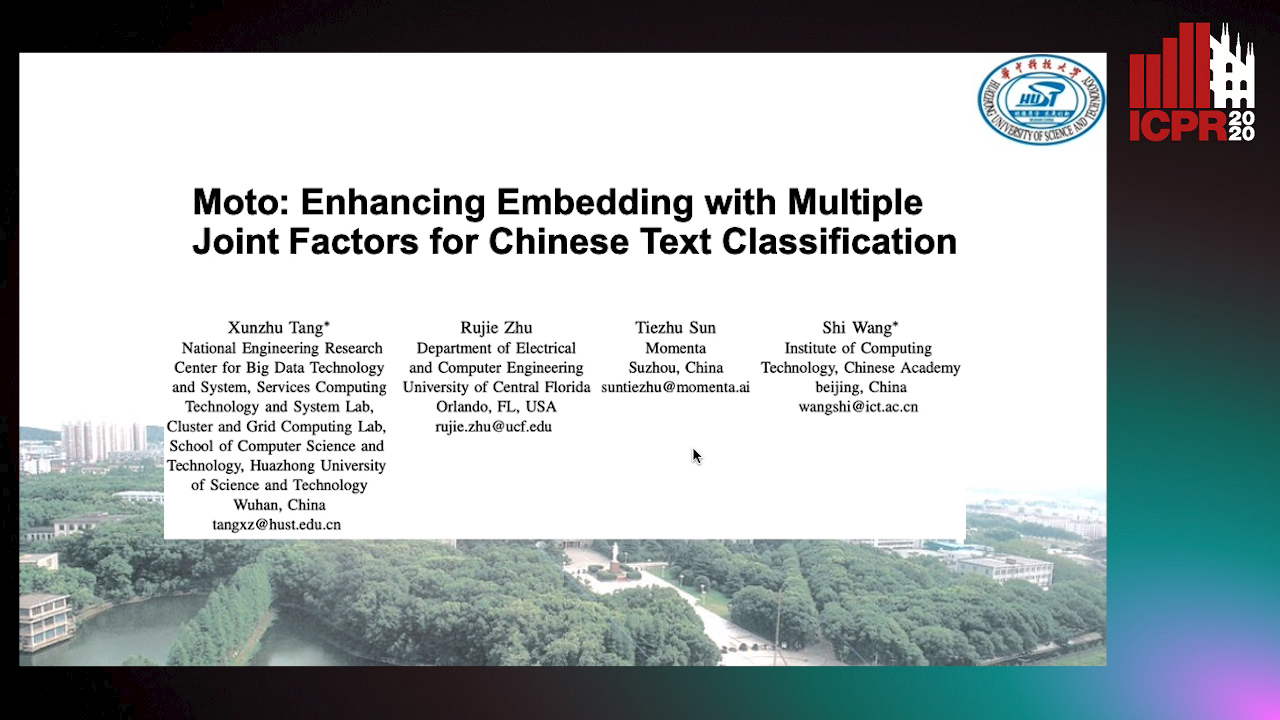
Auto-TLDR; Moto: Enhancing Embedding with Multiple J\textbf{o}int Fac\textBF{to}rs
Abstract Slides Poster Similar
An Integrated Approach of Deep Learning and Symbolic Analysis for Digital PDF Table Extraction
Mengshi Zhang, Daniel Perelman, Vu Le, Sumit Gulwani
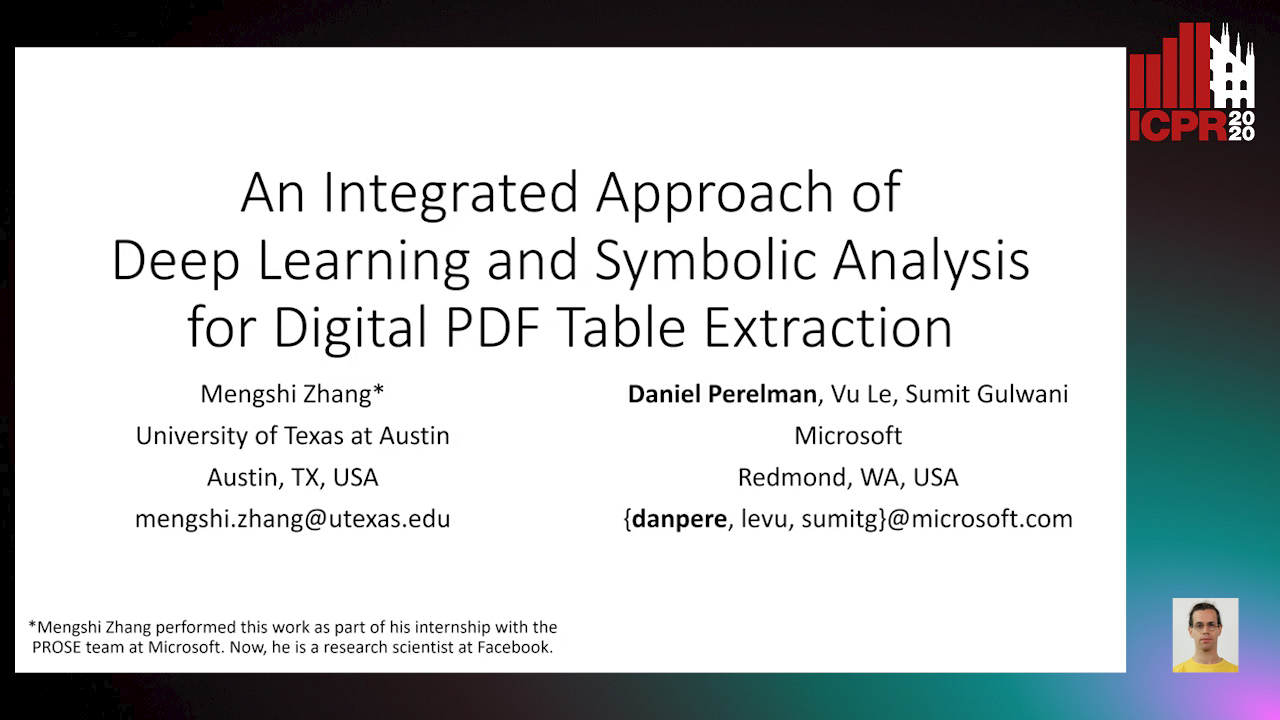
Auto-TLDR; Deep Learning and Symbolic Reasoning for Unstructured PDF Table Extraction
Abstract Slides Poster Similar
Mood Detection Analyzing Lyrics and Audio Signal Based on Deep Learning Architectures
Konstantinos Pyrovolakis, Paraskevi Tzouveli, Giorgos Stamou

Auto-TLDR; Automated Music Mood Detection using Music Information Retrieval
Abstract Slides Poster Similar
Scientific Document Summarization using Citation Context and Multi-objective Optimization
Naveen Saini, Sushil Kumar, Sriparna Saha, Pushpak Bhattacharyya
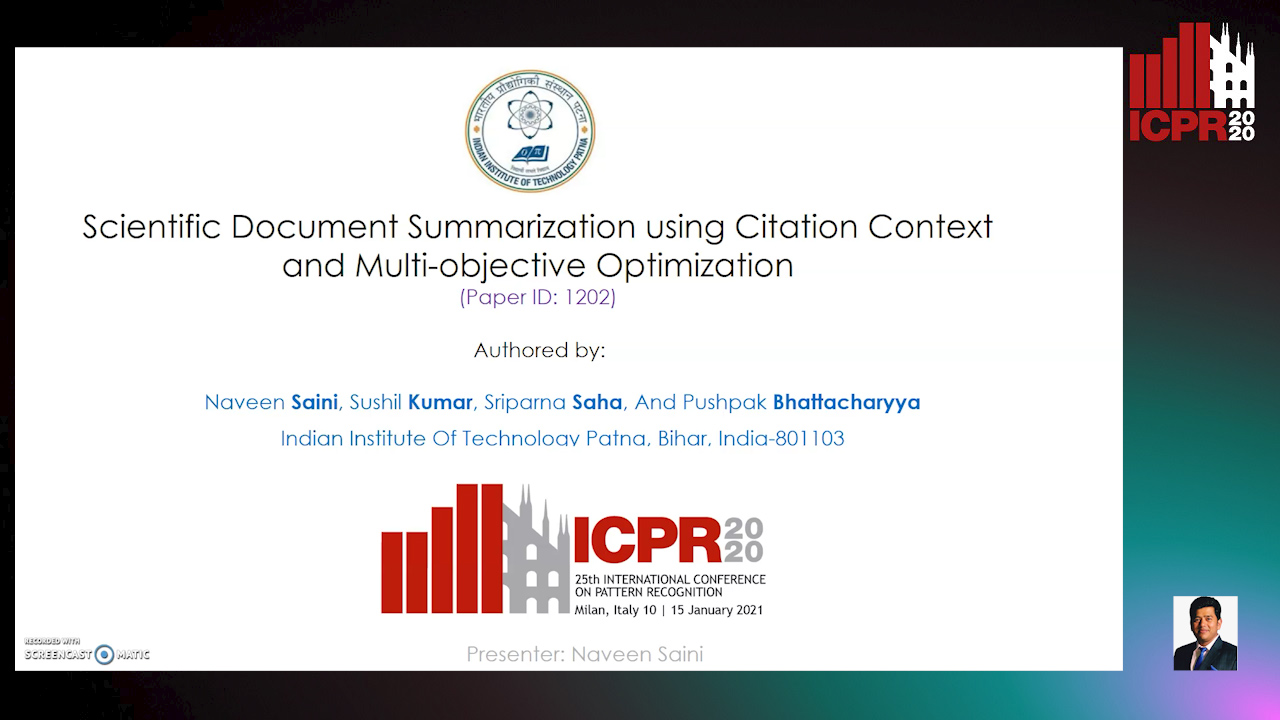
Auto-TLDR; SciSumm Summarization using Multi-Objective Optimization
Abstract Slides Poster Similar
Multi-Task Learning Based Traditional Mongolian Words Recognition
Hongxi Wei, Hui Zhang, Jing Zhang, Kexin Liu
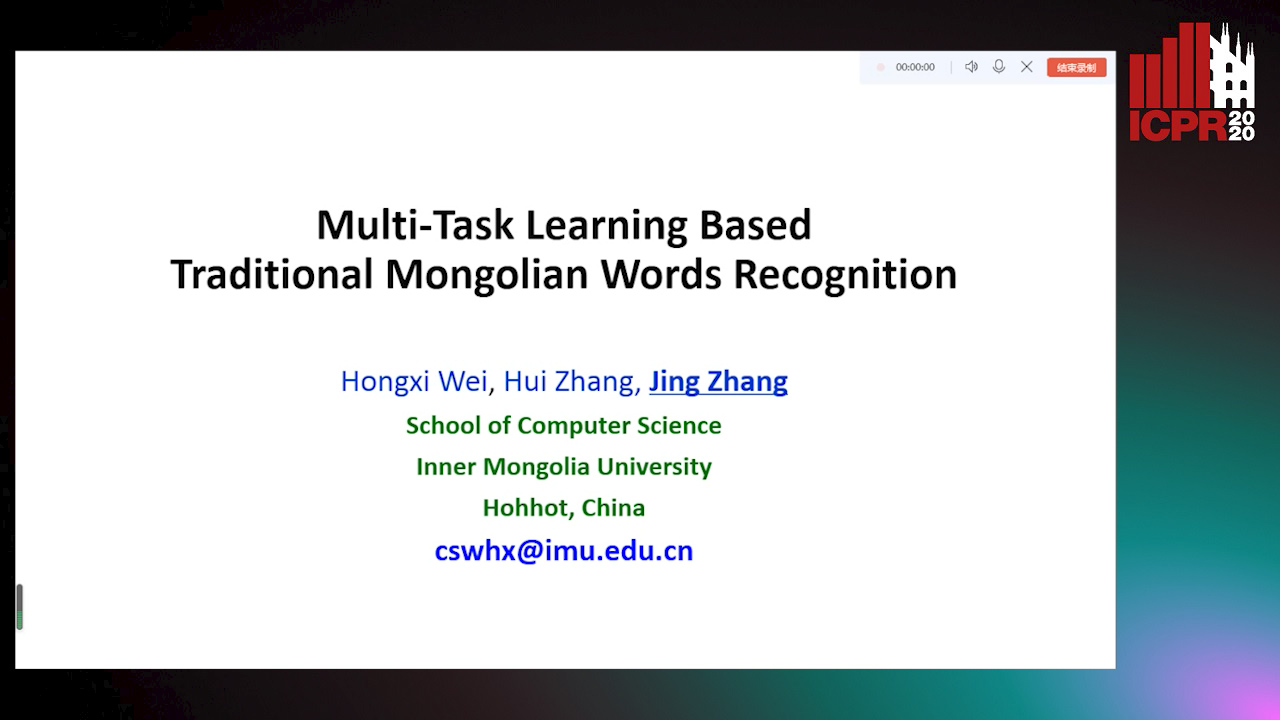
Auto-TLDR; Multi-task Learning for Mongolian Words Recognition
Abstract Slides Poster Similar
An Evaluation of DNN Architectures for Page Segmentation of Historical Newspapers
Manuel Burghardt, Bernhard Liebl

Auto-TLDR; Evaluation of Backbone Architectures for Optical Character Segmentation of Historical Documents
Abstract Slides Poster Similar
Analyzing Zero-Shot Cross-Lingual Transfer in Supervised NLP Tasks
Hyunjin Choi, Judong Kim, Seongho Joe, Seungjai Min, Youngjune Gwon

Auto-TLDR; Cross-Lingual Language Model Pretraining for Zero-Shot Cross-lingual Transfer
Abstract Slides Poster Similar
Label Incorporated Graph Neural Networks for Text Classification
Yuan Xin, Linli Xu, Junliang Guo, Jiquan Li, Xin Sheng, Yuanyuan Zhou

Auto-TLDR; Graph Neural Networks for Semi-supervised Text Classification
Abstract Slides Poster Similar
Assessing the Severity of Health States Based on Social Media Posts
Shweta Yadav, Joy Prakash Sain, Amit Sheth, Asif Ekbal, Sriparna Saha, Pushpak Bhattacharyya

Auto-TLDR; A Multiview Learning Framework for Assessment of Health State in Online Health Communities
Abstract Slides Poster Similar
Text Recognition - Real World Data and Where to Find Them
Klára Janoušková, Lluis Gomez, Dimosthenis Karatzas, Jiri Matas
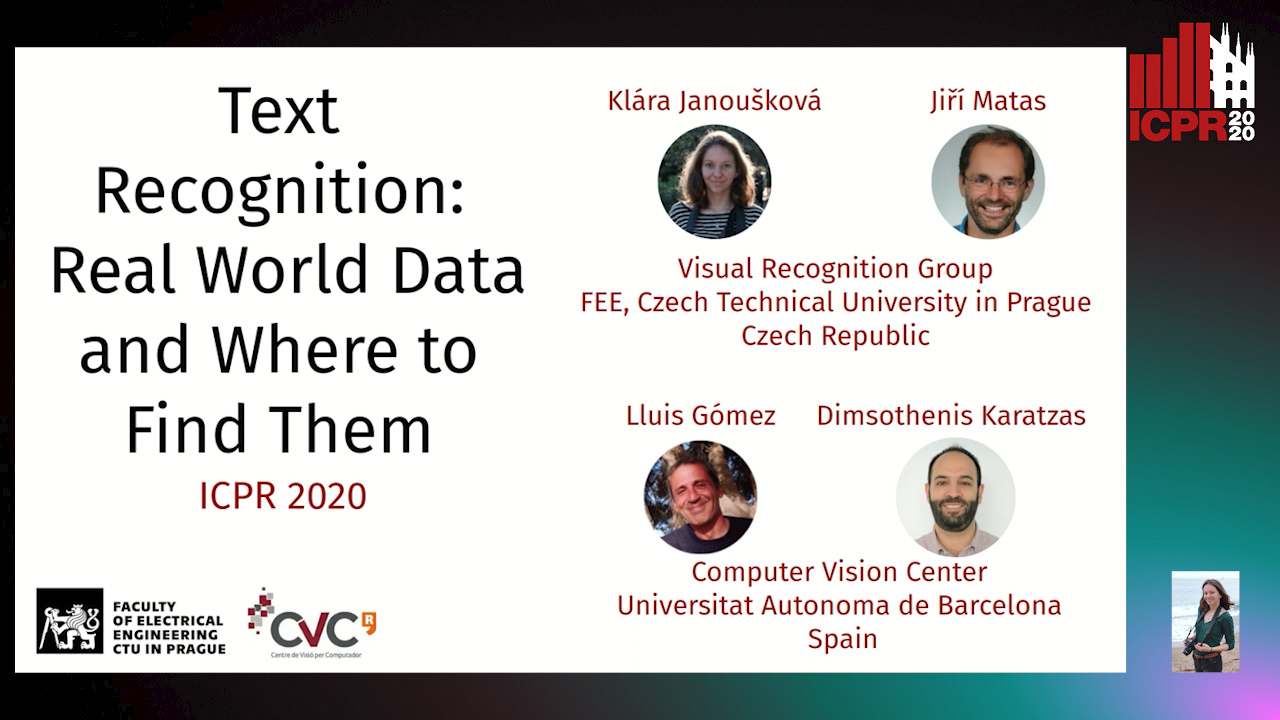
Auto-TLDR; Exploiting Weakly Annotated Images for Text Extraction
Abstract Slides Poster Similar
A Novel Attention-Based Aggregation Function to Combine Vision and Language
Matteo Stefanini, Marcella Cornia, Lorenzo Baraldi, Rita Cucchiara

Auto-TLDR; Fully-Attentive Reduction for Vision and Language
Abstract Slides Poster Similar
Attentive Visual Semantic Specialized Network for Video Captioning
Jesus Perez-Martin, Benjamin Bustos, Jorge Pérez

Auto-TLDR; Adaptive Visual Semantic Specialized Network for Video Captioning
Abstract Slides Poster Similar
Dual Path Multi-Modal High-Order Features for Textual Content Based Visual Question Answering
Yanan Li, Yuetan Lin, Hongrui Zhao, Donghui Wang

Auto-TLDR; TextVQA: An End-to-End Visual Question Answering Model for Text-Based VQA
Automatic Student Network Search for Knowledge Distillation
Zhexi Zhang, Wei Zhu, Junchi Yan, Peng Gao, Guotong Xie
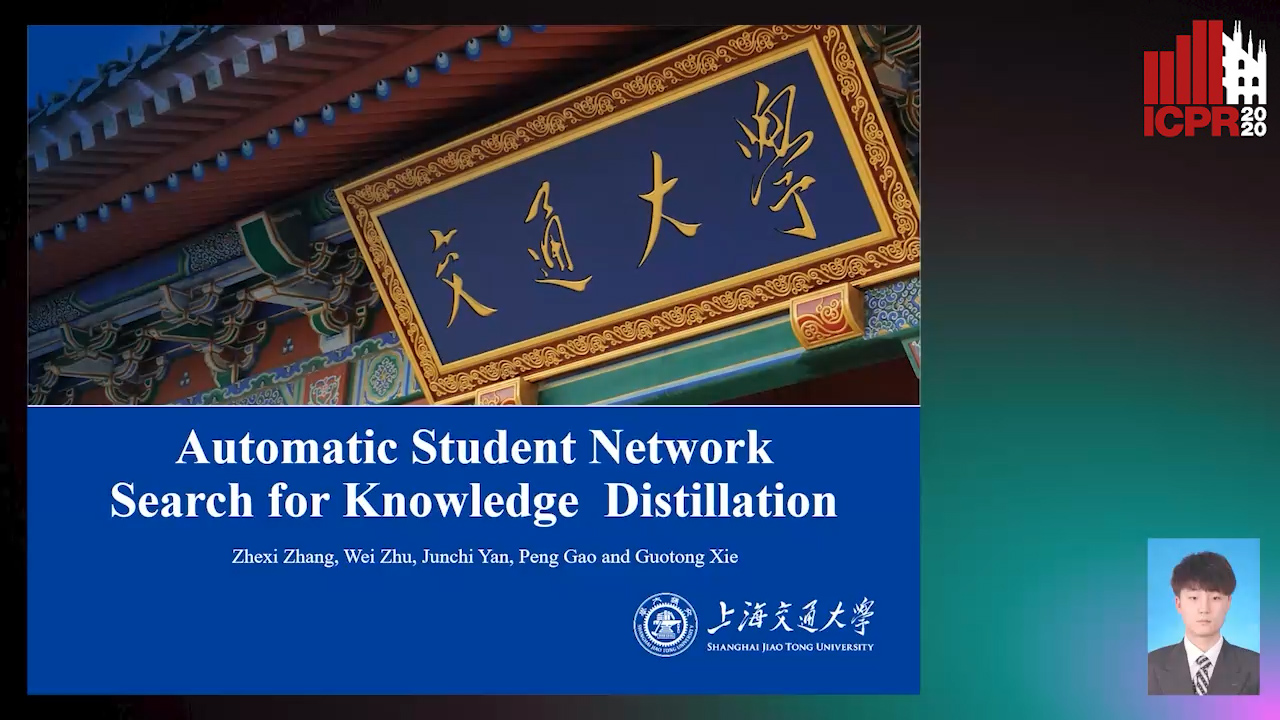
Auto-TLDR; NAS-KD: Knowledge Distillation for BERT
Abstract Slides Poster Similar
A Few-Shot Learning Approach for Historical Ciphered Manuscript Recognition
Mohamed Ali Souibgui, Alicia Fornés, Yousri Kessentini, Crina Tudor
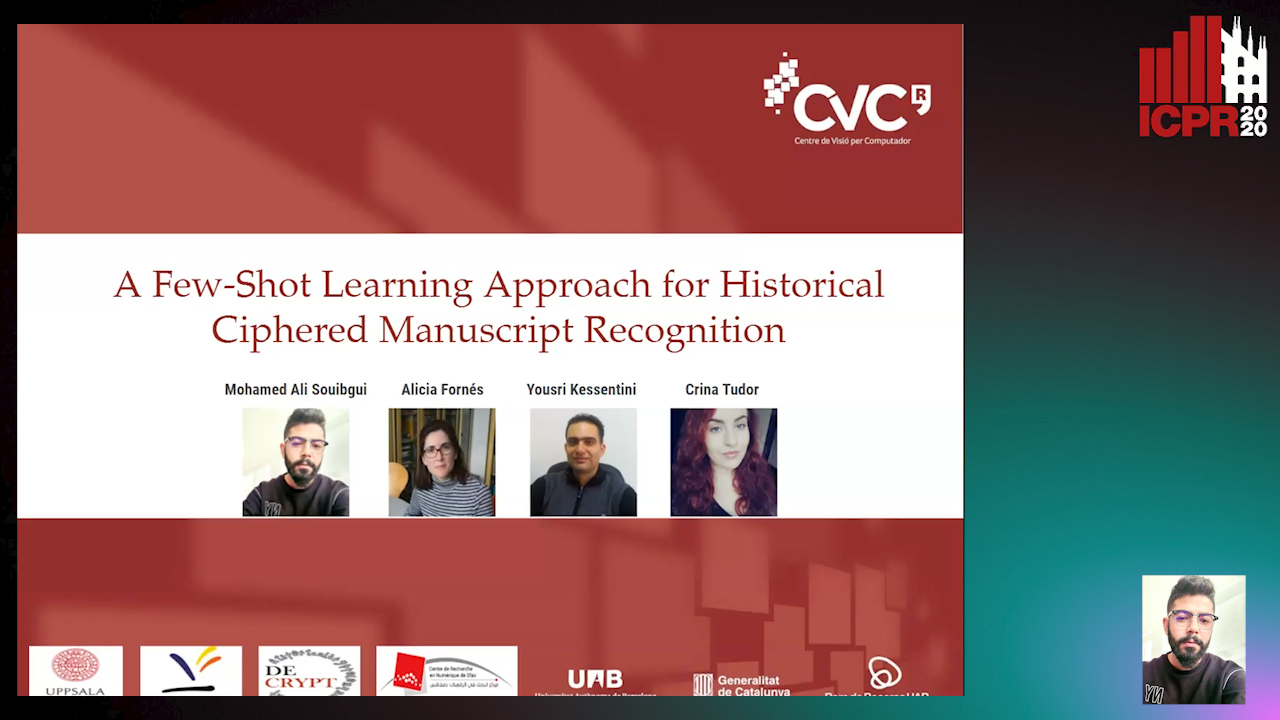
Auto-TLDR; Handwritten Ciphers Recognition Using Few-Shot Object Detection
Enhancing Handwritten Text Recognition with N-Gram Sequencedecomposition and Multitask Learning
Vasiliki Tassopoulou, George Retsinas, Petros Maragos

Auto-TLDR; Multi-task Learning for Handwritten Text Recognition
Abstract Slides Poster Similar
To Honor Our Heroes: Analysis of the Obituaries of Australians Killed in Action in WWI and WWII

Auto-TLDR; Obituaries of World War I and World War II: A Map of Values and Virtues attributed to Australian Military Personnel
Abstract Slides Poster Similar
Multimodal Side-Tuning for Document Classification
Stefano Zingaro, Giuseppe Lisanti, Maurizio Gabbrielli

Auto-TLDR; Side-tuning for Multimodal Document Classification
Abstract Slides Poster Similar
Cross-Lingual Text Image Recognition Via Multi-Task Sequence to Sequence Learning
Zhuo Chen, Fei Yin, Xu-Yao Zhang, Qing Yang, Cheng-Lin Liu

Auto-TLDR; Cross-Lingual Text Image Recognition with Multi-task Learning
Abstract Slides Poster Similar
Multi-Modal Identification of State-Sponsored Propaganda on Social Media

Auto-TLDR; A balanced dataset for detecting state-sponsored Internet propaganda
Abstract Slides Poster Similar
Predicting Chemical Properties Using Self-Attention Multi-Task Learning Based on SMILES Representation

Auto-TLDR; Self-attention based Transformer-Variant Model for Chemical Compound Properties Prediction
Abstract Slides Poster Similar
Improving Word Recognition Using Multiple Hypotheses and Deep Embeddings
Siddhant Bansal, Praveen Krishnan, C. V. Jawahar
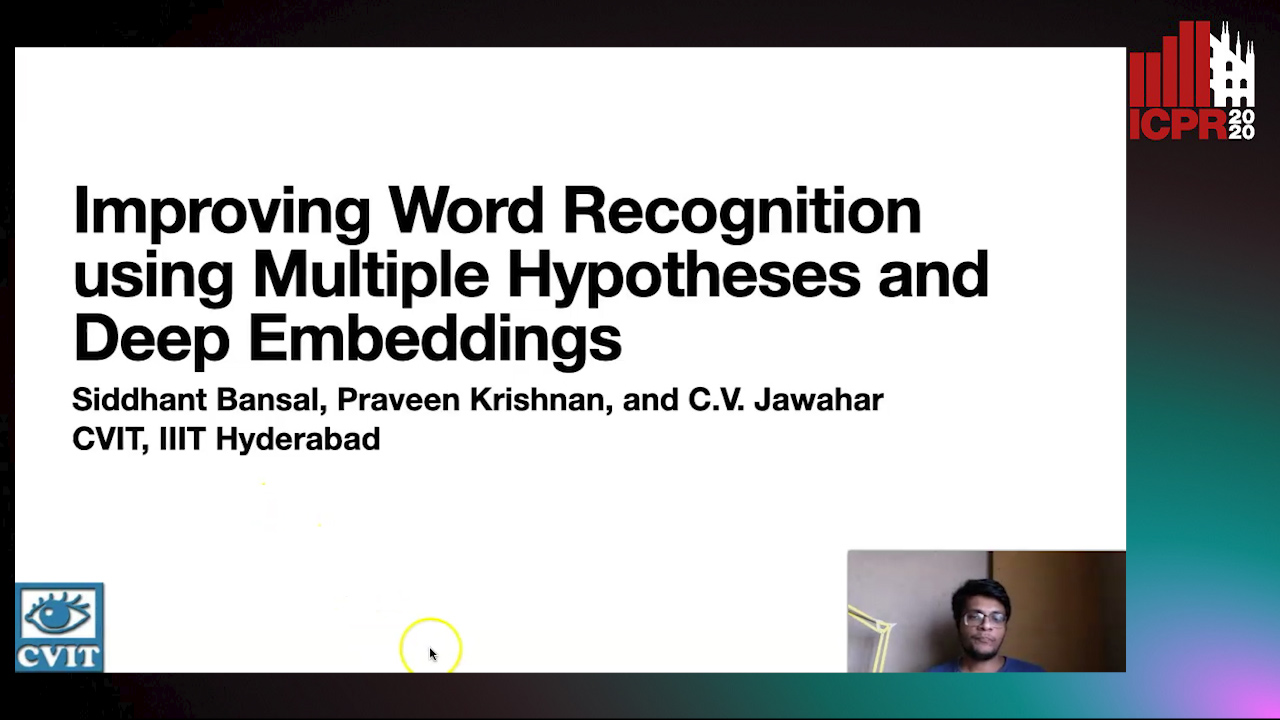
Auto-TLDR; EmbedNet: fuse recognition-based and recognition-free approaches for word recognition using learning-based methods
Abstract Slides Poster Similar
Reinforcement Learning with Dual Attention Guided Graph Convolution for Relation Extraction
Zhixin Li, Yaru Sun, Suqin Tang, Canlong Zhang, Huifang Ma
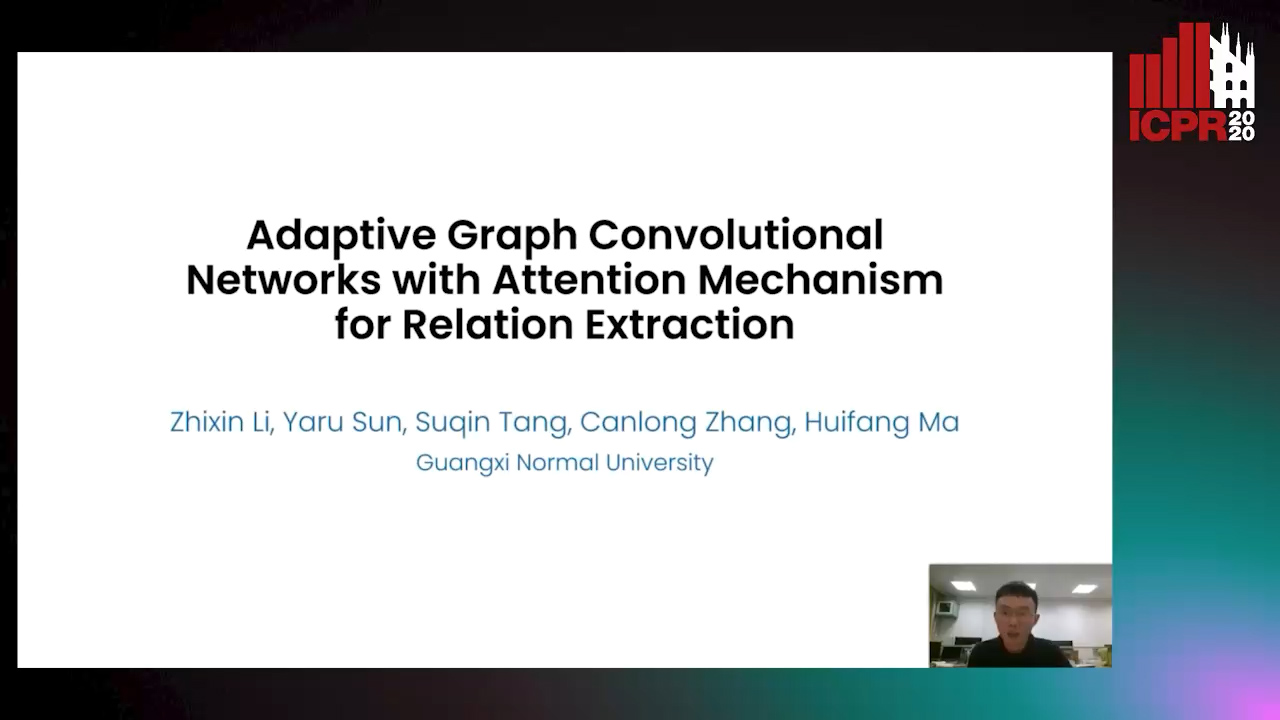
Auto-TLDR; Dual Attention Graph Convolutional Network for Relation Extraction
Abstract Slides Poster Similar
Vision-Based Layout Detection from Scientific Literature Using Recurrent Convolutional Neural Networks

Auto-TLDR; Transfer Learning for Scientific Literature Layout Detection Using Convolutional Neural Networks
Abstract Slides Poster Similar
Equation Attention Relationship Network (EARN) : A Geometric Deep Metric Framework for Learning Similar Math Expression Embedding
Saleem Ahmed, Kenny Davila, Srirangaraj Setlur, Venu Govindaraju

Auto-TLDR; Representational Learning for Similarity Based Retrieval of Mathematical Expressions
Abstract Slides Poster Similar
The Effect of Spectrogram Reconstruction on Automatic Music Transcription: An Alternative Approach to Improve Transcription Accuracy
Kin Wai Cheuk, Yin-Jyun Luo, Emmanouil Benetos, Herremans Dorien
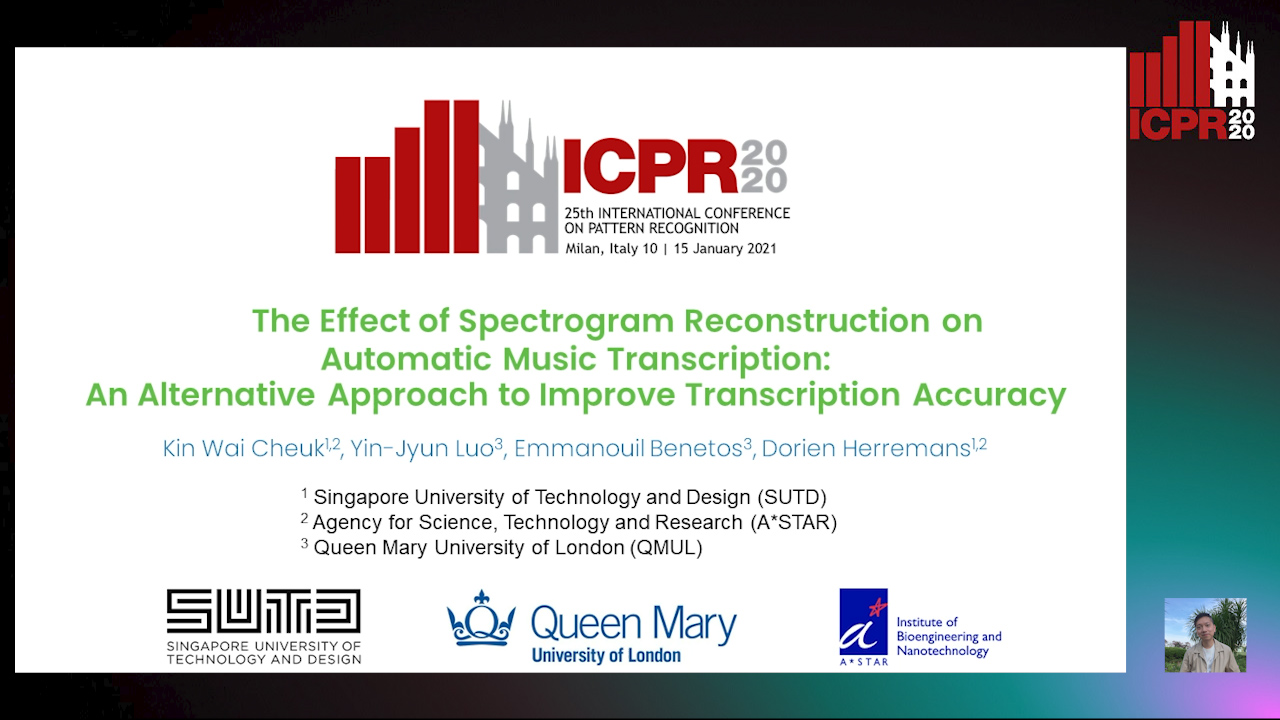
Auto-TLDR; Exploring the effect of spectrogram reconstruction loss on automatic music transcription
Writer Identification Using Deep Neural Networks: Impact of Patch Size and Number of Patches
Akshay Punjabi, José Ramón Prieto Fontcuberta, Enrique Vidal

Auto-TLDR; Writer Recognition Using Deep Neural Networks for Handwritten Text Images
Abstract Slides Poster Similar
Information Graphic Summarization Using a Collection of Multimodal Deep Neural Networks
Edward Kim, Connor Onweller, Kathleen F. Mccoy
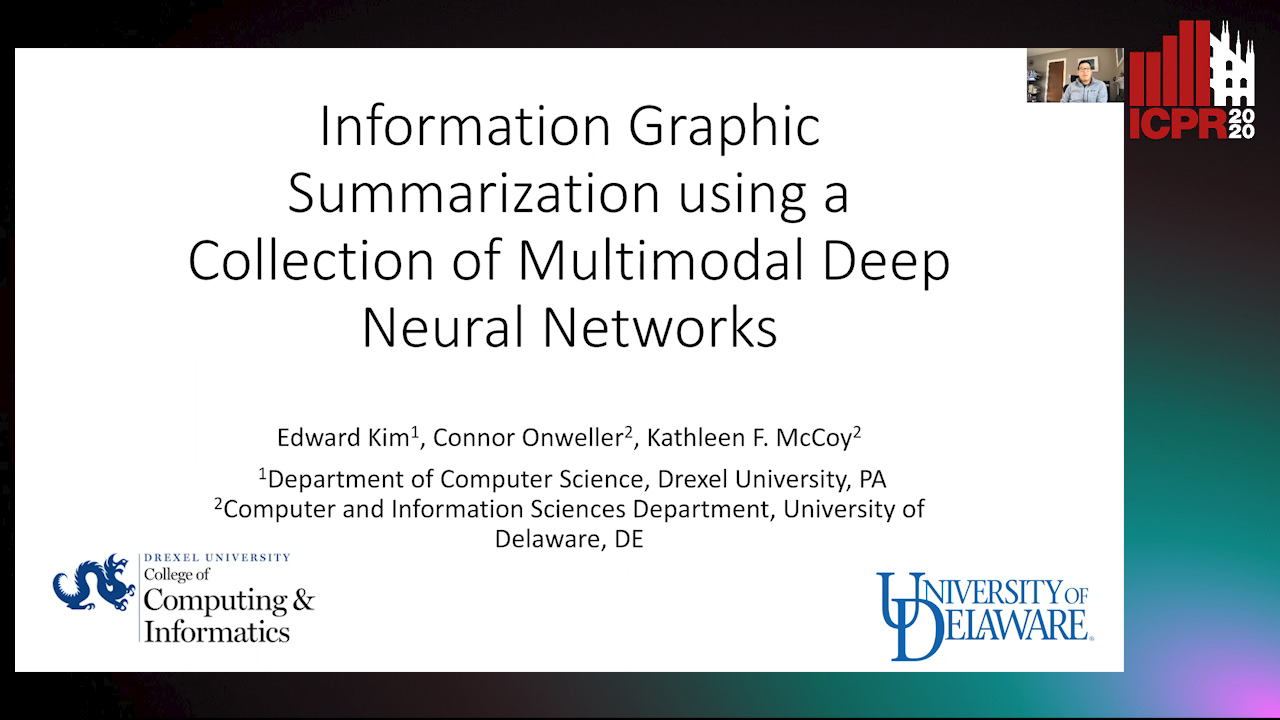
Auto-TLDR; A multimodal deep learning framework that can generate summarization text supporting the main idea of an information graphic for presentation to blind or visually impaired
Automated Whiteboard Lecture Video Summarization by Content Region Detection and Representation
Bhargava Urala Kota, Alexander Stone, Kenny Davila, Srirangaraj Setlur, Venu Govindaraju

Auto-TLDR; A Framework for Summarizing Whiteboard Lecture Videos Using Feature Representations of Handwritten Content Regions
ConvMath : A Convolutional Sequence Network for Mathematical Expression Recognition
Zuoyu Yan, Xiaode Zhang, Liangcai Gao, Ke Yuan, Zhi Tang
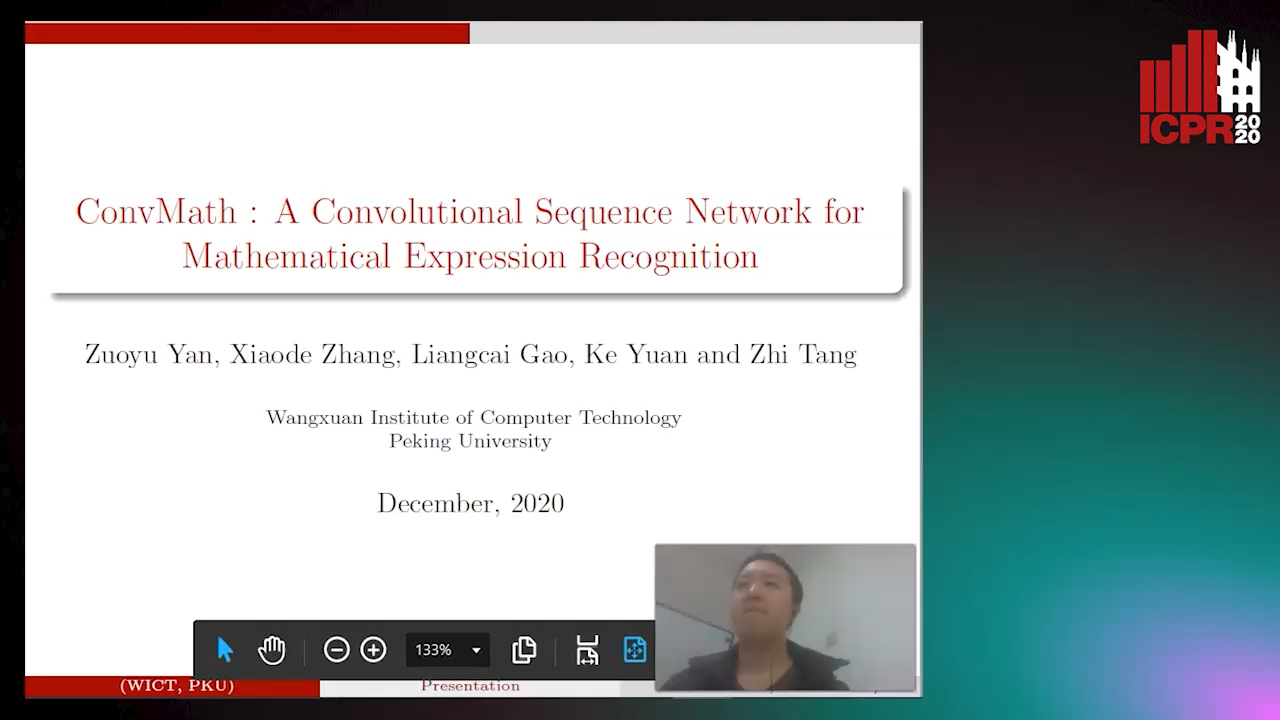
Auto-TLDR; Convolutional Sequence Modeling for Mathematical Expressions Recognition
Abstract Slides Poster Similar